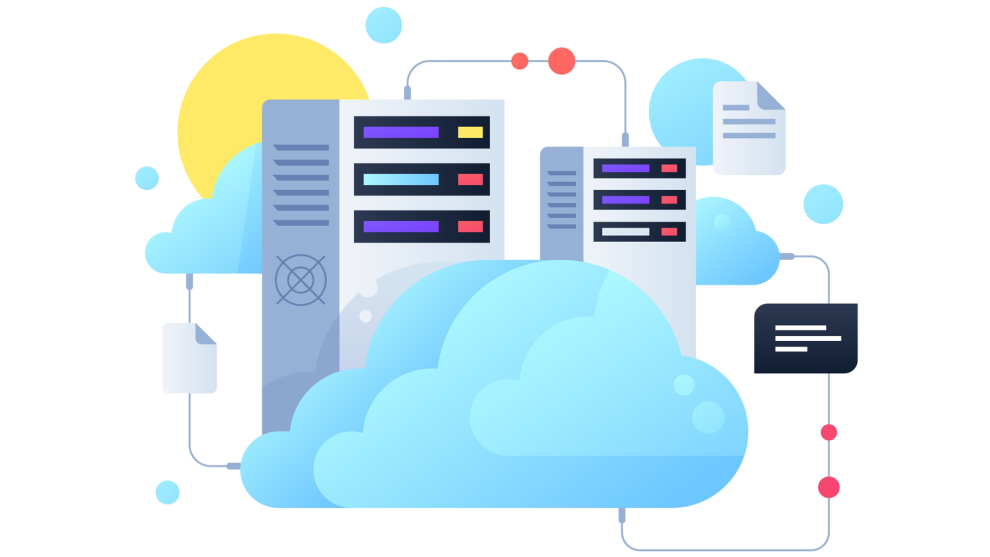
Hello, Reader.
All eyes are locked on the AI arena, watching tech titans clash over whose AI system takes the crown.
Nvidia Corp. (NVDA) stands out as a fan favorite. The giant remains undefeated as AI’s processing powerhouse.
But look past the bright lights and roars of the AI battlefield, and you’ll spot another exciting campaign raging in the shadows…
The surprisingly merciless data center war.
While AI soaks up all the glory with its flashy technological feats, the unglamorous data center realm grinds away behind the scenes.
Early cloud computing companies like Rackspace Technology Inc. (RXT) wowed with the ability to turn a tiny Dell laptop into a high-performance machine. As that initial magic faded, new and larger cloud providers took over the industry.
So, in today’s Smart Money, we’ll shine a spotlight on the data centers wars, the current cloud computing behemoths, and what it all means as an investment opportunity.
Let’s dive in…
A Stroll Down Enterprise Computing
The first cloud computing shift happened in the mid-2010s, when enterprise customers began moving into the cloud. These large businesses and organizations needed far more available computing power than the ordinary user, and only major providers like Amazon.com Inc. (AMZN) could guarantee enough space.
The industry still wasn’t particularly profitable. Amazon itself saw its returns on capital invested (ROIC) plummet from the 20% range into the single digits in that decade, as cloud services crowded out its lucrative e-commerce business.
Servers are expensive and need replacing every couple of years, so cloud computing companies looked more like airlines and automakers: capital-intensive firms with little chance of long-term profitability.
But in 2022, all that changed. And cloud computing companies can thank artificial intelligence for that.
AI has the strange property of running well in parallel. Today’s artificial intelligence models are based on enormous multidimensional matrices (also known as tensors), which can be solved by multiple processors at the same time.
That’s because the “neuron weights” of today’s neural networks are most easily organized by matrixes, and each entry in an answer matrix can be calculated independently of all the others. It’s why graphics processing units (GPUs) are better at AI-based calculations than central processing units (CPUs), and why companies like Nvidia have done so incredibly well. When it comes to linear algebra, multiple, slower processors work better than one ultrafast chip.
Tech giants quickly realized this concept is true across entire data centers as well. Amazon’s $10 billion “Project Atlas” data center campus, under development just north of Jackson, Mississippi, will span as much as 1,700 acres once complete. The first building alone will cover 3 million square feet, or about 55 football fields. Alphabet Inc. (GOOG), too, is converting many of its existing data centers into similar behemoths.
These new data centers, termed “hyperscales” or “hyperscalers,” are now giving Google, Amazon, and Microsoft Corp. (MSFT) their moment.
These specialiozed server systems require enormous upfront investments, and the three-way oligopoly is turning a once barely profitable business into a cash-spinning operation. Analysts now expect the three companies to generate almost $200 billion in profits next year, largely owing to this lucrative new business. Amazon itself is expected to see its ROIC surge back to 26% this year.
What’s Next for Hyperscalers – and AI?
These three companies should do well in the medium term. Not only are these tech giants snapping up prime real estate, infrastructure, and chips ahead of the competition… they’re also pouring billions into creating proprietary, state-of-the-art AI models. This matters. Once a customer invests in Google’s VertexAI system, for example, it becomes much more difficult to switch to a rival platform, since code must get rewritten and processes redone.
However, the jury is still out on the long-run outcome. A couple weeks ago, The Economist rightfully noted that today’s hyperscaler companies look much like other historical instances of irrational exuberance…
In the early days, railway track was laid for locomotives that were soon superseded by more powerful ones. As the rolling stock grew heavier, lines had to be replaced with sturdier stuff. During the 1990s telecoms firms increased capital expenditure by three-and-a-half times and laid 600 [million] km of cable… The tech giants’ assumptions about people’s willingness to pay for chatbots and other whizzy “gen-ai” tools may be just as misplaced.
That is right in a sense. Amazon depreciates its servers on a five-year basis, while Google does it in six. Every billion dollars spent on new gear today will cost another billion to replace by the end of the decade… and so on into perpetuity.
There’s also the uncertainty of innovation. Today’s tensor-based AI models run well on hyperscale data centers, which is easy to take for granted. Tomorrow’s AI might do well on quantum computers or even biological ones. There’s no “law” that says ultralarge 1,700-acre data centers will have a place in the future.
Fortunately, we’re not quite there yet. Amazon and Alphabet are set to report record earnings this year, and rising analyst estimates is a strong sign that things are still going well. Both companies remain great data center plays.
As we see this explosion in artificial intelligence on all fronts… hundreds of millions of people could find themselves on the wrong side of a great flood of destruction unleashed by AI.
That’s why I’m issuing an AI Code Red.
I created a short presentation to help you prepare for what’s coming. Click here for all the details.
Regards,
Eric Fry






